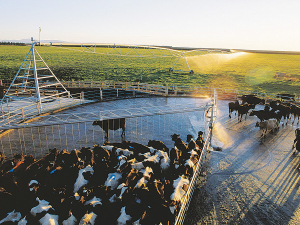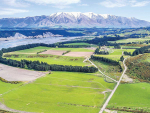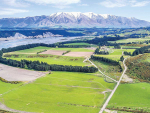Recently released data from the Real Estate Institute of New Zealand (REINZ) shows there were 224 fewer farm sales (-48.6%) for the three months ended April 2023, compared to the same period last year.
Overall, there were 237 farm sales in the three months ended April 2023, compared to 238 farm sales for the three months ended March 2023 (-0.4%) and 461 farm sales for the three months ended April 2022.
In the year to April 2023, 1208 farms were sold, 566 fewer than in the year to April 2022, with Dairy farms down 37.5%, Dairy Support down 10.6%, Grazing farms down 21.2% , Finishing farms down 30.2% and Arable farms down 35.9%.
For the three months ended April 2023, the median sales price per hectare for dairy farms was $39,190, compared to $36,925 for the same period in 2022.
Overall, the median price per hectare rose by 6.1% in the past 12 months.
Meanwhile, the median sales price per kilo of milk solids was $37.59/kgMS for the three months ended April 2023, up 15.2% on $32.63/kgMS for the three months ended April 2022.
At the same time, finishing farms averaged a median sale price per hectare of $38,870 for the three months ended April 2023, a 9% increase on the April 2022 figure of $35,655 per hectare.
REINZ Rural spokesperson Shane O’Brien says the sales levels for April 2023 were in line with the previous three months and were widely anticipated following a continued trend in the drop in farm sales across all parts of New Zealand since the start of the year.
“Sales volumes are down on previous months across all parts of New Zealand; however, a slightly lower drop is evident in the South Island regions,” O’Brien says.
“As has been stated previously, the demand for land for timber and carbon has reduced on the back of the recent policy announcements by central government and the fall in the New Zealand unit price for carbon, and we believe this is likely to remain for much of 2023,” suggests O’Brien.
“The recent reduction in the Fonterra farmgate price to a mid-point of $8.30 has seen many buyers concentrate on current farm performance and are not looking at further acquisition,” he says.
O’Brien adds that on-farm inflation costs such as fuel, fertiliser and labour also impacted buyer decisions.
“Uncertainty on the outcome of this year’s general election and the unknown impact this will have on farming compliance and regulatory requirements is very much at the forefront of farmers’ minds, with many who have been active in the market now adopting a wait-andsee approach which is being borne out with the reduction in the number of listings of properties for sale and the corresponding lower number of confirmed sales,” says O’Brien. Important to note, however, is that the farm values remain steady across most regions, highlighting continued confidence in the farming sector.
O’Brien says purchasers are willing to pay for the right property if it suits their requirements, with abundant sales evidence indicating prices in line with 2021 and 2022, particularly in the arable, dairy, and dairy support sectors.
In April 2023, Grazing farms accounted for a 32% share of all sales. Finishing farms accounted for 24% of all sales. Dairy farms accounted for 17% of all sales, and Dairy Support farms accounted for 10% of all sales. These four property types accounted for 83% of all sales during the three months ended April 2023.


















